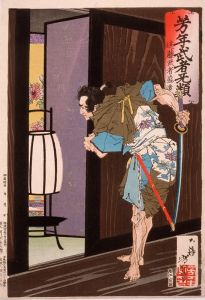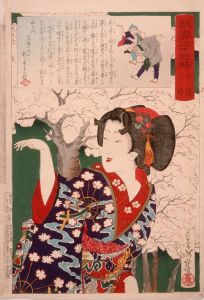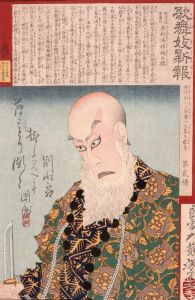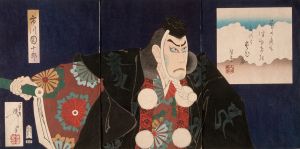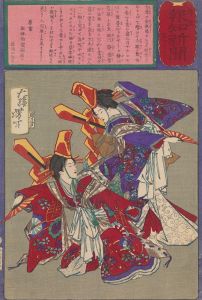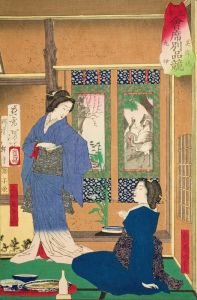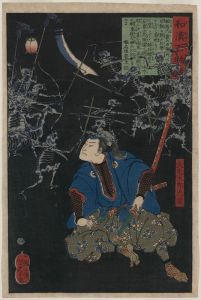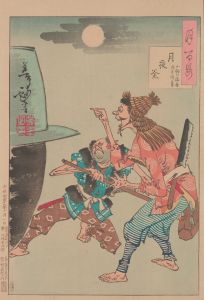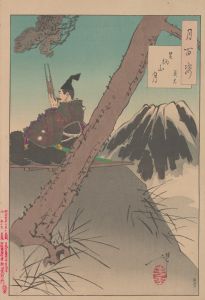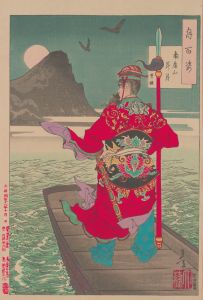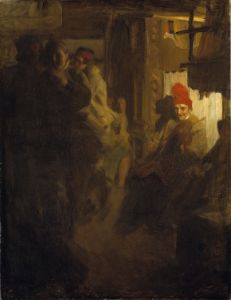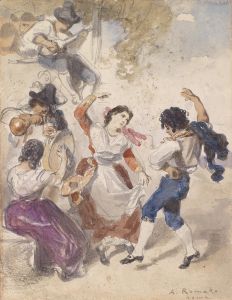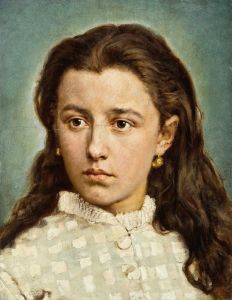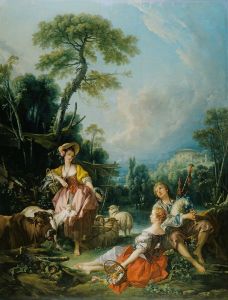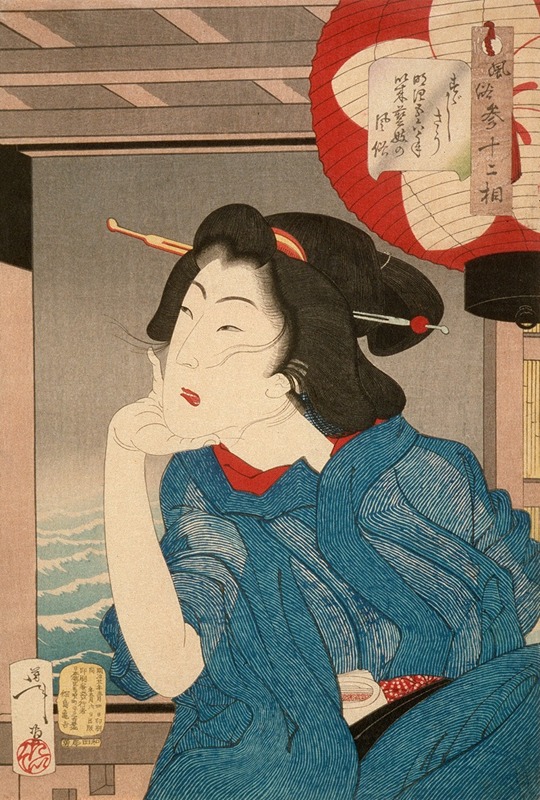
A Geisha of the Mid-1870s Seated in a Boat
A hand-painted replica of Tsukioka Yoshitoshi’s masterpiece A Geisha of the Mid-1870s Seated in a Boat, meticulously crafted by professional artists to capture the true essence of the original. Each piece is created with museum-quality canvas and rare mineral pigments, carefully painted by experienced artists with delicate brushstrokes and rich, layered colors to perfectly recreate the texture of the original artwork. Unlike machine-printed reproductions, this hand-painted version brings the painting to life, infused with the artist’s emotions and skill in every stroke. Whether for personal collection or home decoration, it instantly elevates the artistic atmosphere of any space.
"A Geisha of the Mid-1870s Seated in a Boat" is a woodblock print created by the renowned Japanese artist Tsukioka Yoshitoshi. Yoshitoshi, who lived from 1839 to 1892, was one of the last great masters of the ukiyo-e genre of woodblock printing and painting. His works are celebrated for their dynamic compositions, innovative use of color, and the way they capture the complexities of human emotion and historical narratives.
This particular print is part of Yoshitoshi's exploration of traditional Japanese themes during a time of significant cultural and political change in Japan. The Meiji Restoration, which began in 1868, marked the end of the Tokugawa shogunate and the restoration of imperial rule. This period was characterized by rapid modernization and Westernization, which had a profound impact on Japanese society and its arts. Despite these changes, Yoshitoshi remained committed to the ukiyo-e tradition, while also incorporating new techniques and perspectives.
The subject of the print, a geisha, is depicted seated in a boat, which is a common motif in Japanese art symbolizing travel, transition, or leisure. Geishas were highly trained entertainers known for their skills in music, dance, and conversation, and they played a significant role in Japanese cultural life. The depiction of a geisha in this setting might suggest themes of elegance, beauty, and the ephemeral nature of life, which are recurring themes in Yoshitoshi's work.
Yoshitoshi's prints are noted for their attention to detail and the emotional depth of their subjects. In "A Geisha of the Mid-1870s Seated in a Boat," the artist likely employed his characteristic style, which often includes a focus on the expressive potential of the human face and the use of vibrant colors to enhance the emotional impact of the scene. The print would have been created using traditional woodblock printing techniques, which involve carving an image into a wooden block, applying ink, and then pressing the block onto paper.
The historical context of the print is significant, as it reflects a period when Japan was negotiating its identity amidst the pressures of modernization. Artists like Yoshitoshi played a crucial role in preserving traditional Japanese aesthetics while also responding to contemporary influences. His work is often seen as a bridge between the classical ukiyo-e style and the new artistic movements that emerged in Japan during the late 19th century.
Yoshitoshi's legacy is marked by his ability to convey complex emotions and narratives through his art, and "A Geisha of the Mid-1870s Seated in a Boat" is a testament to his skill and sensitivity as an artist. Today, his prints are highly valued by collectors and are considered important cultural artifacts that offer insight into the social and artistic currents of Meiji-era Japan.





